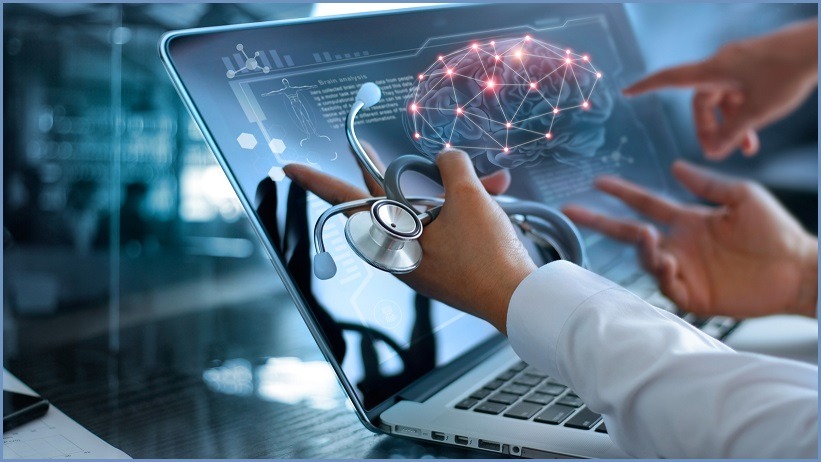How Does Technology Keep Us Safe
In an increasingly complex world, safety is a paramount concern for individuals, communities, and nations alike. While traditional security measures remain essential, technology has emerged as a powerful force in safeguarding our well-being. From sophisticated surveillance systems to innovative personal safety devices, technological advancements are transforming the landscape of safety and security.

This blog post delves into the multifaceted ways technology is keeping us safe, exploring its impact on various domains:
1. Crime Prevention and Detection:
Technology plays a crucial role in deterring crime and apprehending criminals.
Surveillance Systems: CCTV cameras, facial recognition technology, and license plate readers provide real-time monitoring of public spaces, helping to deter criminal activity and identify suspects.
Predictive Policing: Data analytics and machine learning algorithms can analyze crime patterns and predict potential hotspots, enabling law enforcement agencies to allocate resources more effectively.
Forensic Science: DNA analysis, fingerprint identification, and digital forensics provide crucial evidence in criminal investigations, leading to more accurate convictions.
2. Personal Safety and Security:
Technology empowers individuals to take control of their safety and security.
Personal Safety Apps: Mobile applications offer features such as emergency SOS buttons, location sharing, and real-time tracking, allowing users to alert loved ones or authorities in case of danger.
Wearable Devices: Smartwatches and fitness trackers equipped with GPS and emergency features can help locate individuals in distress and provide assistance.
Home Security Systems: Smart home security systems with motion sensors, door/window alarms, and remote monitoring capabilities provide enhanced protection for homes and families.
3. Cybersecurity and Data Protection:
In the digital age, protecting our online data and systems from cyber threats is paramount.
Antivirus and Firewall Software: These essential tools protect computers and networks from malware, viruses, and unauthorized access.
Data Encryption: Encrypting sensitive data makes it unreadable to unauthorized individuals, safeguarding personal information and financial transactions.
Multi-Factor Authentication: Requiring multiple forms of verification, such as passwords and biometric data, adds an extra layer of security to online accounts.
4. Disaster Preparedness and Response:
Technology plays a vital role in mitigating the impact of natural disasters and other emergencies.
Early Warning Systems: Sensors and monitoring networks can detect earthquakes, tsunamis, and other natural hazards, providing timely alerts to populations at risk.
Emergency Communication Systems: Satellite phones, two-way radios, and mobile messaging platforms enable communication during emergencies when traditional infrastructure may be disrupted.
Drone Technology: Drones can be deployed for search and rescue operations, damage assessment, and delivery of essential supplies in disaster-stricken areas.
5. Transportation Safety:
Technology is enhancing safety on roads, in the air, and at sea.
Advanced Driver-Assistance Systems (ADAS): Features such as lane departure warnings, blind spot detection, and automatic emergency braking help prevent accidents and reduce fatalities.
Air Traffic Control Systems: Radar, GPS, and communication systems ensure the safe and efficient flow of air traffic, minimizing the risk of collisions.
Maritime Navigation Systems: GPS, sonar, and radar technology aid in navigation, collision avoidance, and search and rescue operations at sea.
6. Healthcare Safety:
Technology is transforming healthcare, improving patient safety and outcomes.
Electronic Health Records (EHRs): EHRs provide secure and accessible patient information, reducing medical errors and improving care coordination.
Telemedicine: Remote consultations and monitoring allow patients to access healthcare services from the comfort of their homes, reducing the need for travel and potential exposure to infections.
Medical Imaging Technology: MRI, CT scans, and other imaging techniques enable early and accurate diagnosis of diseases, leading to more effective treatments.
7. Environmental Safety:
Technology is playing a crucial role in monitoring and mitigating environmental risks.
Pollution Monitoring: Sensors and remote sensing technologies track air and water quality, identifying pollution sources and enabling timely interventions.
Climate Change Modeling: Sophisticated computer models simulate climate patterns and predict future impacts, informing mitigation and adaptation strategies.
Renewable Energy Technologies: Solar, wind, and other renewable energy sources reduce reliance on fossil fuels, mitigating climate change and air pollution.
Addressing Concerns and Ensuring Ethical Development:
While technology offers immense potential for enhancing safety, it's crucial to address potential downsides and ensure responsible development.
Privacy Concerns: The use of surveillance technologies raises concerns about privacy infringement. Striking a balance between security and individual liberties is essential.
Bias in Algorithms: AI algorithms can perpetuate existing biases, leading to unfair or discriminatory outcomes. Ensuring fairness and transparency in algorithm development is crucial.
Cybersecurity Risks: As our reliance on technology grows, so does the risk of cyberattacks. Robust cybersecurity measures are essential to protect critical infrastructure and personal data.
Conclusion:
Technology is a powerful tool for enhancing safety and security in all aspects of our lives. From preventing crime to protecting our online data to mitigating environmental risks, technological advancements are transforming the way we live and interact with the world. By embracing innovation while addressing ethical concerns, we can harness the power of technology to create a safer and more secure future for all.




